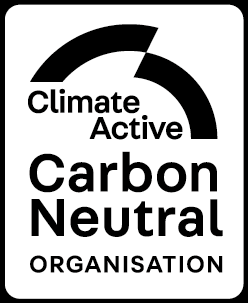
PFAS Removal
PFAS Removal – Tailored Water Treatment Solutions for Industry and Infrastructure
Hydroflux has extensive expertise in designing and constructing advanced treatment solutions to mitigate PFAS contamination in both water supplies and wastewater prior to discharge. For over five years, we have successfully implemented a range of proven technologies, including ion exchange, activated carbon filtration, and membrane separation, achieving exceptional PFAS removal performance with demonstrated efficiencies of over 99.9999%.
Our experience spans multiple industries and applications, delivering reliable and effective solutions tailored to specific site requirements. Hydroflux also offers modular and relocatable containerised systems, providing flexible and scalable options for both temporary and permanent PFAS mitigation.
Hydroflux provides customised solutions to address PFAS removal, including:
- HyPure® Activated carbon
- HyX® Ion exchange resins
- HyPure® Advanced membrane filtration

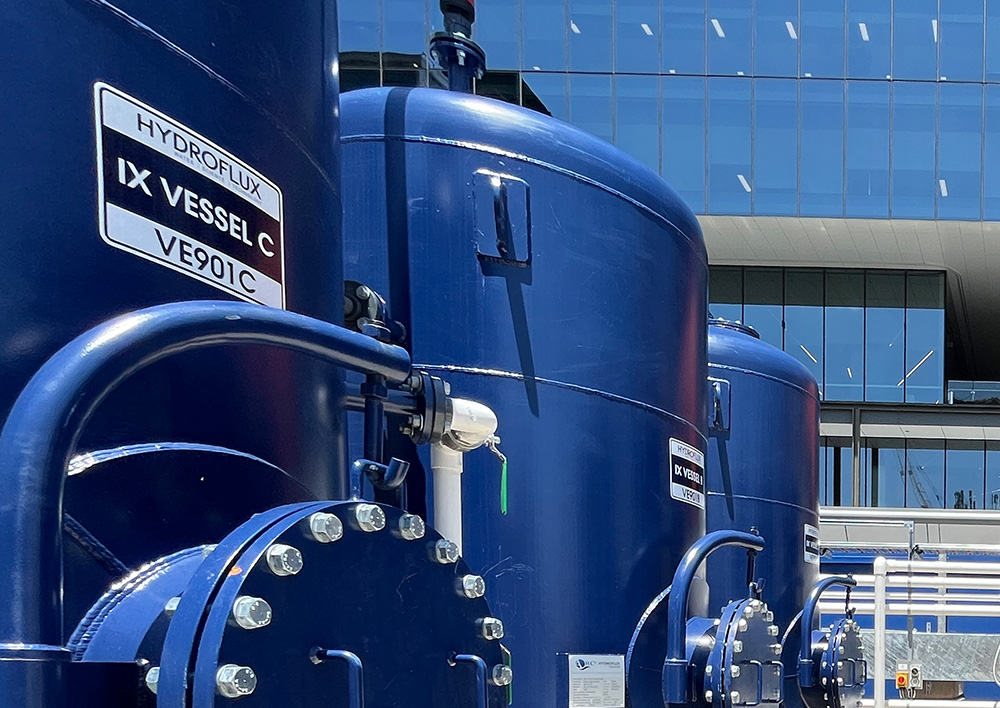
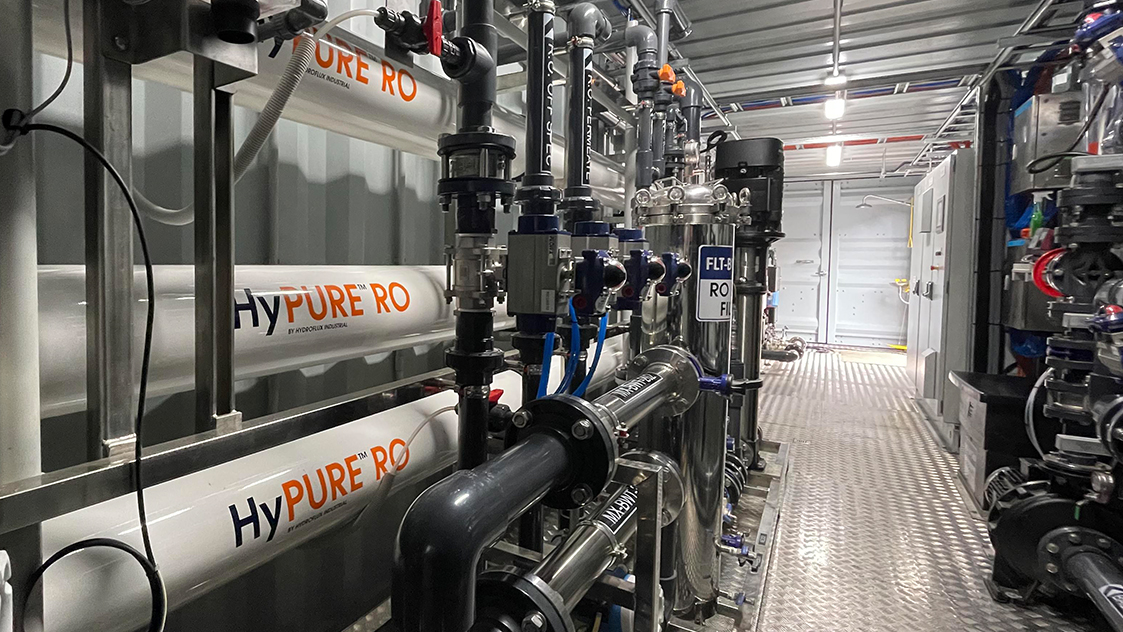
No operations and processes are identical and as such, we believe in the importance of tailored solutions. We work closely with each operation to develop optimised treatment solutions which are uniquely designed to suit site conditions and operational needs.
HyPure® Activated Carbon for PFAS Removal
Activated carbon removes PFAS through a process called adsorption, where PFAS molecules adhere to the surface of the carbon particles. The effectiveness of activated carbon depends on several factors, including the type of PFAS, the carbon’s surface area, and operational conditions. How activated carbon works in removing PFAS is explained below:
High Surface Area & Pore Structure
- Activated carbon has a porous structure with a high surface area, which provides numerous adsorption sites for PFAS molecules to attach.
- Both granular activated carbon (GAC) and powdered activated carbon (PAC) can be used for PFAS removal.
Hydrophobic & Electrostatic Interactions
- PFAS compounds, especially long-chain ones like PFOA and PFOS, have hydrophobic (water-repelling) tails that preferentially bind to the non-polar surface of activated carbon.
- Electrostatic interactions between PFAS and carbon surfaces further enhance adsorption.
Carbon Type & Treatment Efficiency
- GAC is often used in fixed-bed filters, allowing water to flow through while trapping PFAS.
- PAC, a finer material, is typically added directly to water and later removed via filtration.
Regeneration & Saturation
- Over time, carbon reaches saturation and loses effectiveness, requiring periodic replacement or regeneration.
- Spent activated carbon can sometimes be thermally reactivated otherwise fresh material is required.
Below are some examples of Hydroflux Activated Carbon systems installed for various applications:
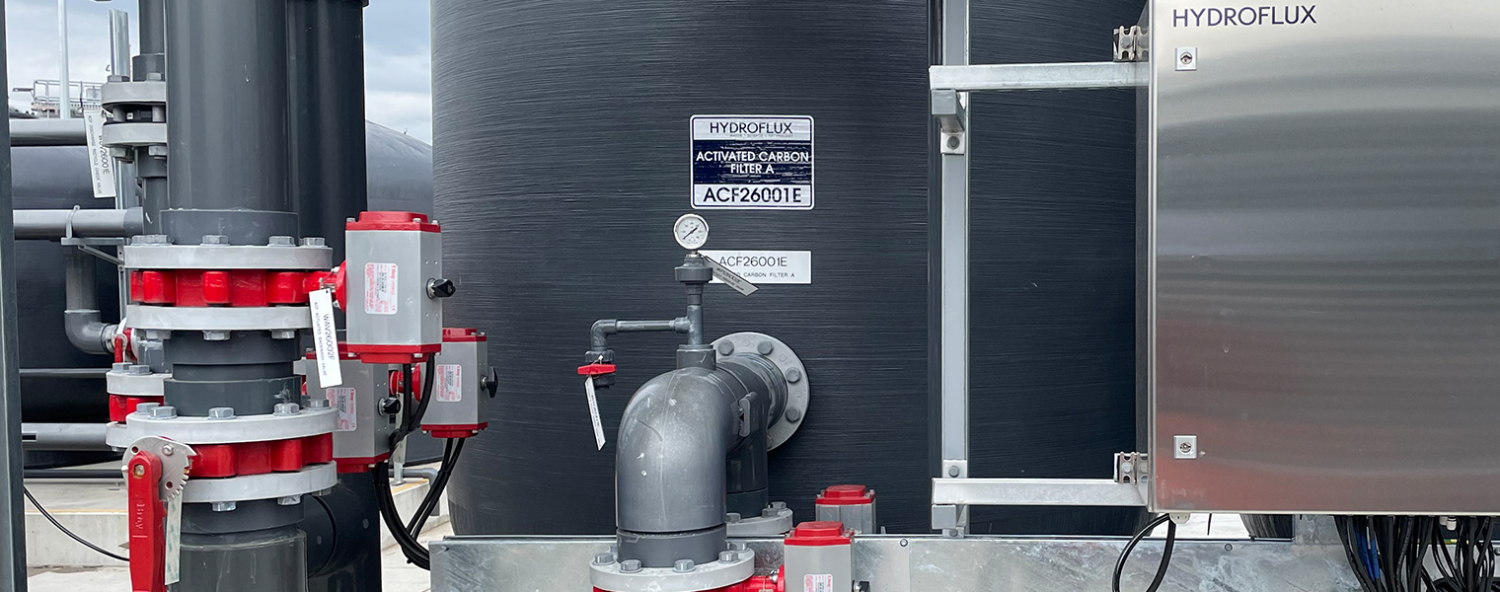

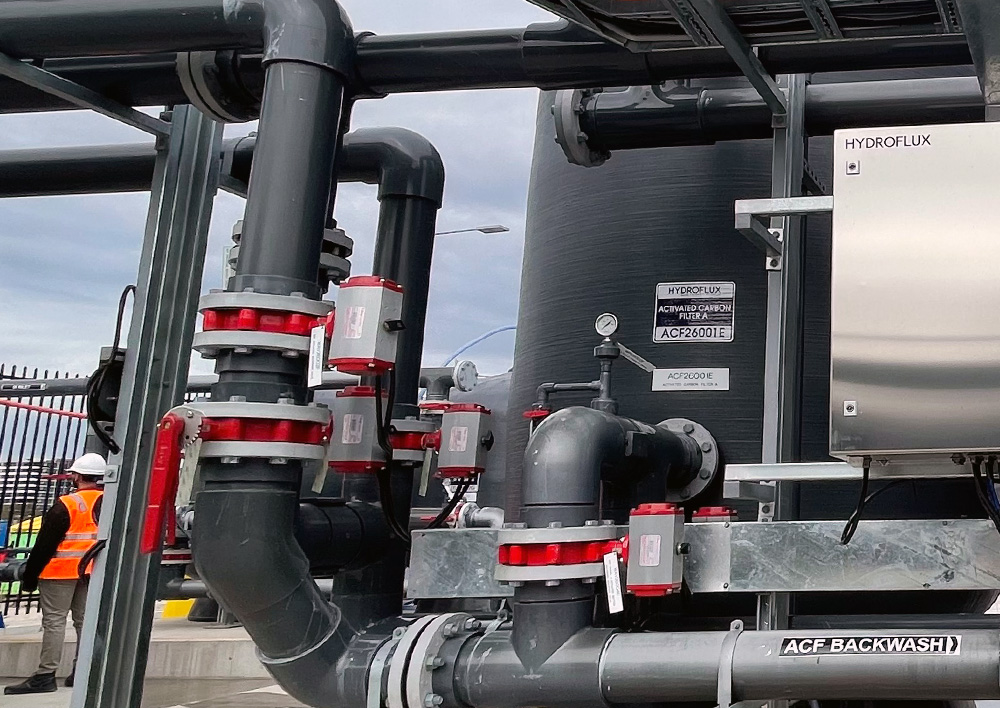
Performance Considerations of Activated Carbon
- Long-chain PFAS (e.g., PFOA, PFOS): Highly effective adsorption.
- Short-chain PFAS (e.g., PFBA, PFBS): More challenging to remove due to lower hydrophobicity.
- Water Quality Factors: Organic matter, competing contaminants, and pH levels can influence removal efficiency.
For enhanced performance, activated carbon is often combined with ion exchange resins or membrane filtration for comprehensive PFAS treatment.
Please contact us by clicking the link below to discuss the suitability of Activated Carbon for PFAS removal, or visit our HyPURE Activated Carbon page.
HyX® Ion Exchange for PFAS Removal
Ion exchange is a highly effective method for removing PFAS from water, particularly short-chain PFAS compounds that are difficult to capture with activated carbon. The process involves specialised ion exchange resins that attract and bind PFAS molecules, removing them from the water. How ion exchange works in removing PFAS is explained below:
Specialised Ion Exchange Resins
- These resins are synthetic, porous materials with charged functional groups designed to selectively attract PFAS molecules.
- Strong anion exchange (SAX) resins are most commonly used, as PFAS compounds typically exist as negatively charged ions (anions) in water.
Electrostatic Attraction
- PFAS compounds, especially perfluorinated carboxylates (PFCAs) and perfluorinated sulfonates (PFSAs), have negatively charged functional groups.
- These anions are drawn to the positively charged sites on the ion exchange resin, where they become trapped and held in place.
Selective Adsorption
- Ion exchange resins are engineered to have a high affinity for PFAS, ensuring efficient removal even at low concentrations.
- They outperform activated carbon in removing short-chain PFAS, which are more mobile in water and less hydrophobic.
Regeneration & Replacement
- Once the resin becomes saturated with PFAS, it must either be replaced or regenerated.
- Some resins can be regenerated using a chemical process, but this requires careful handling to prevent reintroducing PFAS into the environment.
- Single-use resins are an alternative, but disposal must be managed responsibly.
Below are some examples of Hydroflux HyX systems and IX resin.
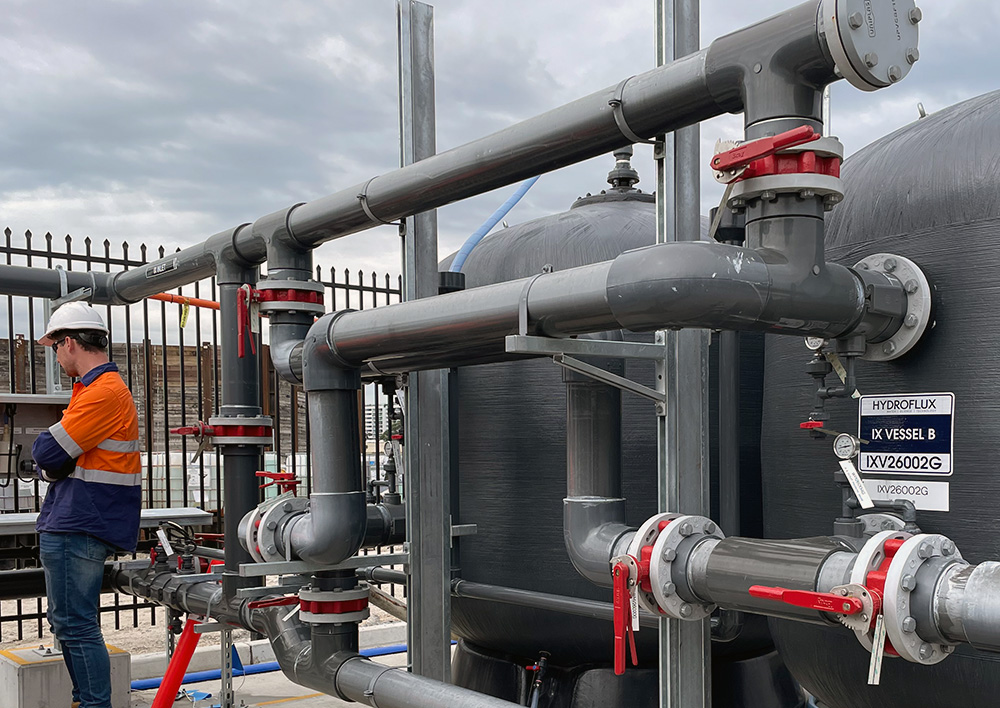


Performance Considerations of Ion Exchange
- Long-chain PFAS (e.g., PFOA, PFOS): High removal efficiency
- Short-chain PFAS (e.g., PFBA, PFBS): More effective than activated carbon
- Competing Contaminants: Other anionic pollutants (e.g., sulfates, nitrates) can reduce efficiency
- Resin Type Selection: Must be optimised based on the specific PFAS profile in the water
Many treatment systems combine ion exchange with activated carbon or membrane filtration to maximise removal efficiency.
Please contact us by clicking the link below to discuss the suitability of Ion Exchange for PFAS removal visit our HyX page.
HyPure® Membranes for PFAS Removal
Membrane filtration, particularly reverse osmosis (RO) and nanofiltration (NF), is one of the most effective technologies for PFAS removal. These high-pressure filtration processes use semi-permeable membranes to physically separate PFAS compounds from water. How membrane technology works for PFAS removal is explained below:
Semi-Permeable Membrane Structure
- Membrane filters consist of extremely fine pores that allow water molecules to pass while blocking larger contaminants, including PFAS compounds.
- Reverse osmosis membranes have the smallest pore size (~0.0001 microns), effectively removing even the smallest PFAS molecules.
Physical Rejection of PFAS Molecules
- PFAS compounds, including both short-chain and long-chain varieties, are too large to pass through the membrane.
- As a result, they are concentrated in the reject stream (brine), which must be properly managed.
High-Efficiency PFAS Removal
- Reverse Osmosis (RO): Can remove up to 99% of PFAS, including short-chain compounds that are more difficult to capture using other methods.
- Nanofiltration (NF): Less restrictive than RO but still highly effective at removing long-chain PFAS while allowing beneficial minerals to pass through.
Brine Concentrate Management
- The rejected PFAS-containing concentrate must be handled appropriately to prevent recontamination.
- Disposal options include incineration, advanced oxidation, or deep-well injection, depending on regulatory requirements.
Below are some examples of Hydroflux HyPure Membrane systems and a view of NX Nano filtration pores ideally suited for PFAS rejection.
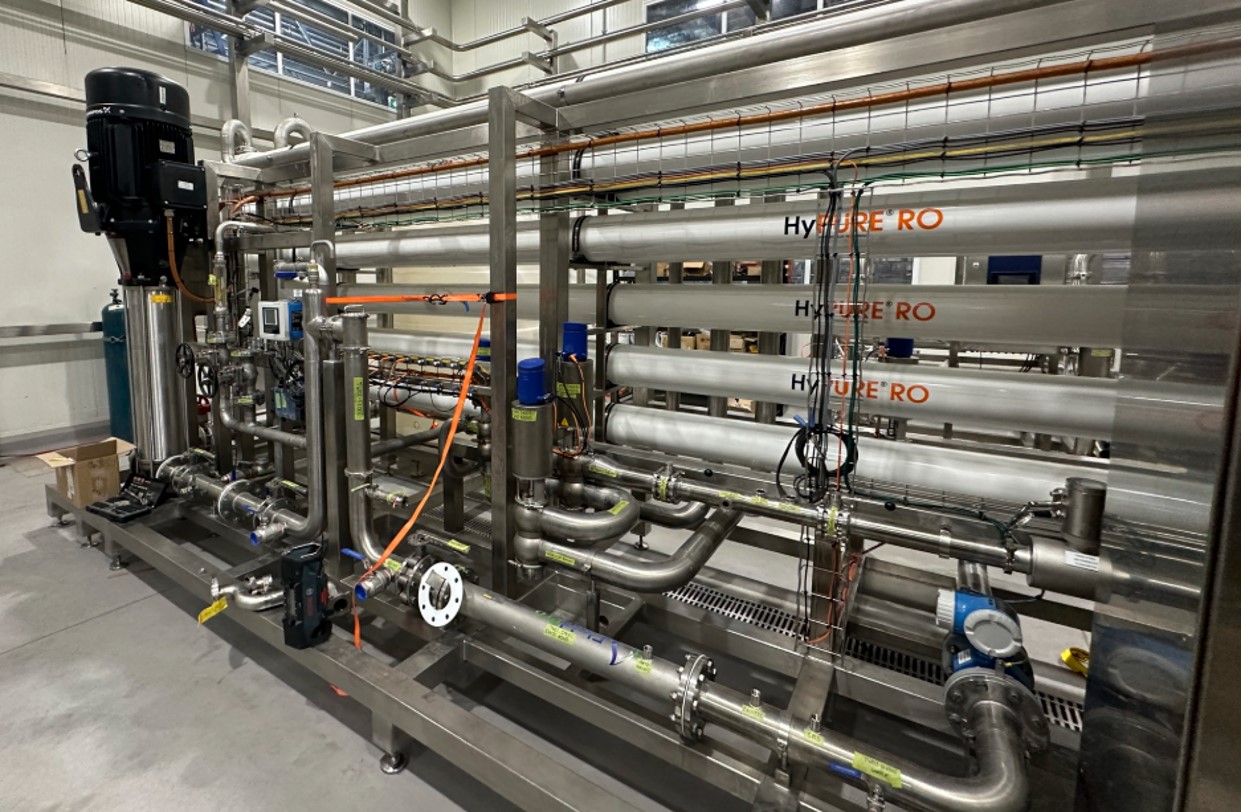
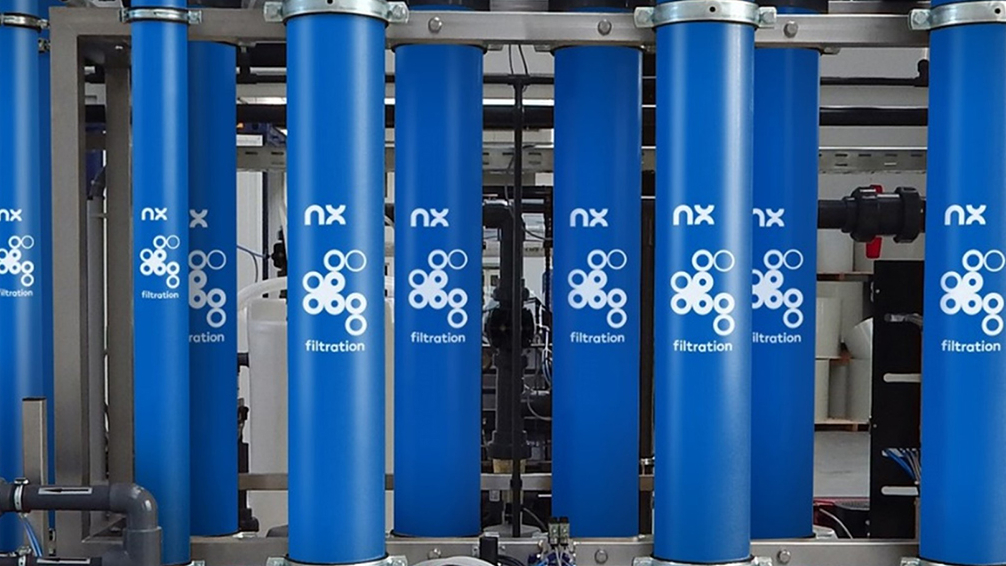
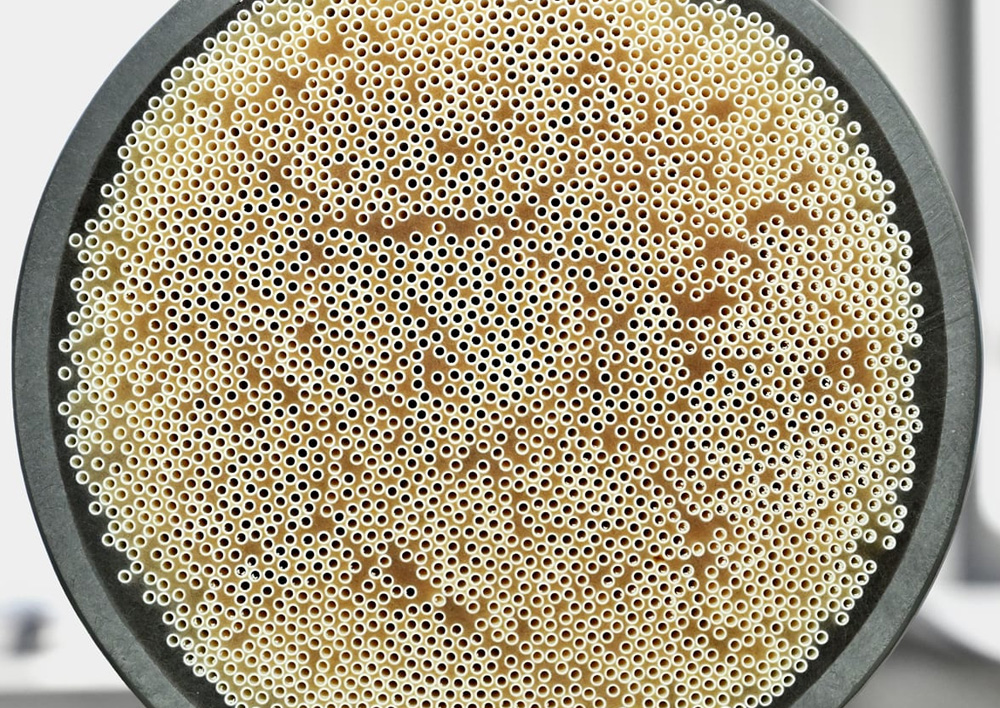
Performance Considerations of Membrane Technology
- Long-chain PFAS (e.g., PFOA, PFOS): Nearly 100% removal
- Short-chain PFAS (e.g., PFBA, PFBS): High efficiency, but requires careful concentrate management
- Energy Consumption: RO systems require high pressure, increasing operational costs
- Scaling & Fouling Risks: Membranes must be protected from biofouling, scaling, and chemical degradation
Membrane filtration is often combined with activated carbon or ion exchange resins to enhance performance, reduce costs, and manage brine disposal effectively.
Please contact us by clicking the link below to discuss the suitability of HyPure Membranes for PFAS removal, or visit our HyPure RO or NX Nanofiltration pages via the links.
Comparison of PFAS Removal Technologies
The table below compares the effectiveness, selectivity, energy demand, and waste management considerations of different PFAS removal technologies, helping to identify the most suitable approach based on specific treatment needs.
| Feature | Reverse Osmosis (RO) | Nanofiltration (NF) | Activated Carbon | Ion Exchange |
|---|---|---|---|---|
| Best for | All PFAS types | Long-chain PFAS | Long-chain PFAS | Short & long-chain PFAS |
| Selectivity | Very High | High | Moderate | High |
| Energy Demand | High | Moderate | Low | Low |
| Brine/Regeneration Waste | Yes | Yes | No | Yes (if regenerable) |
| Maintenance Needs | High | Moderate | Moderate | Low |
Hydroflux: Delivering Tailored Engineering Solutions with Uncompromising Standards
Hydroflux specialises in integrating our high standards for system design and safety with site-specific engineering requirements, prioritising our customers’ requirements above all else. This commitment ensures that each project achieves the best possible outcome. We pride ourselves having dedicated inhouse teams across our offices, including:

Our inhouse capabilities uniquely position us to take your project from design right through to installation, commissioning, and provide continued technical support and chemical supply. Each team and department is closely integrated, providing full understanding of design impacts on process efficiency, CAPEX and OPEX costs for each operation. Our familiarisation and experience with industry standards in general including safety, civil, mechanical, electrical, instrumentation and automation means we produce a compliant and optimsed design from the start of the project.
Packaged Deployable Products for PFAS removal
To simplify installation and operations for PFAS removal, Hydroflux offers containerised and skid-mounted solutions. These compact, pre-engineered systems are designed for rapid deployment, making them ideal for temporary installations or locations with limited infrastructure or simply just for convenience.
Please view the animation of a containerised RO system for more details.
For more information on our containerised systems or to discuss your specific requirements, please contact us
Certified WHS, Environmental and Risk Management Systems for Peace of Mind
With a team of qualified civil, mechanical, chemical, and electrical engineers, as well as experienced project managers, site supervisors, commissioning engineers, and service technicians, Hydroflux offers flexible contract options, ranging from equipment design and supply to full turnkey installations with expert execution at every stage. All projects are conducted under externally approved occupational health and safety, and environmental management systems.
Our offices across Australia provide a strong local presence, ensuring seamless project management from design through to installation. Additionally, Hydroflux offers post-installation routine service contracts to maintain system performance and longevity.
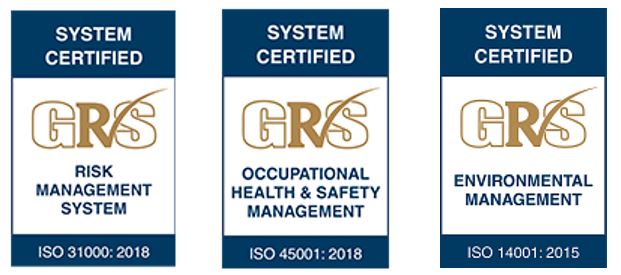
Comprehensive Support for PFAS Removal in Water & Wastewater Treatment Plants
Hydroflux is a trusted partner for the food processing industry, providing end-to-end water and wastewater treatment solutions. Beyond system design and installation, Hydroflux offers chemical optimisation, preventative maintenance, biological plant modelling, and remote monitoring, ensuring long-term reliability and performance for every plant.
Chemical Optimisation
Hydroflux offers a comprehensive range of chemical solutions, including coagulants, antiscalants, acids/alkalis, oxidising/reducing agents, and proprietary cleaning and sanitising products. These chemicals are formulated to optimise process water feed conditioning before and after treatment, or enhancing the performance of your wastewater treatment plant. Our chemists work closely with the project delivery team to develop a site-specific chemical program that ensures maximum treatment efficiency and cost-effectiveness.
Preventative Maintenance & Service
To guarantee consistent performance from day one, Hydroflux provides customised service and maintenance programs. Our engineers and technicians discuss preventative maintenance strategies during the construction phase, offering routine service, periodic overhauls, and full plant operation support. Our service team is available 24/7 to respond to unforeseen breakdowns, ensuring uninterrupted plant operation.
Remote Monitoring
All Hydroflux process water treatment plants come equipped with our proprietary HyCONNECT™ remote monitoring system, providing instant online technical support and troubleshooting. For remote locations with limited connectivity, we offer specialty monitoring solutions to ensure continuous system oversight. No matter where your facility is located, Hydroflux specialists are just a call away, ready to assist with real-time diagnostics and performance optimisation.
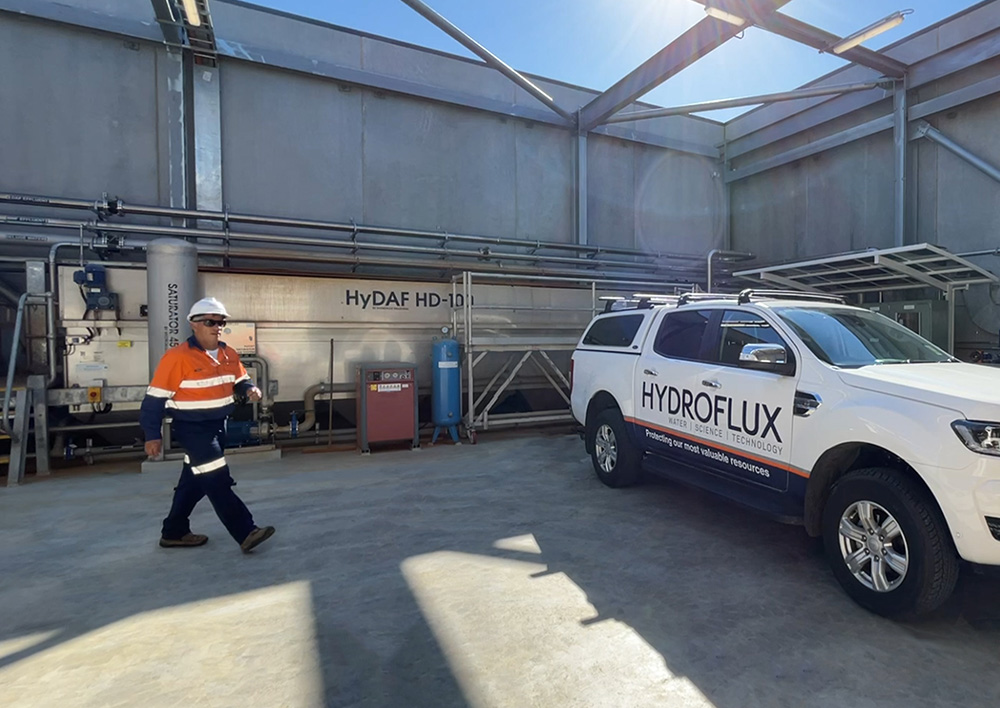
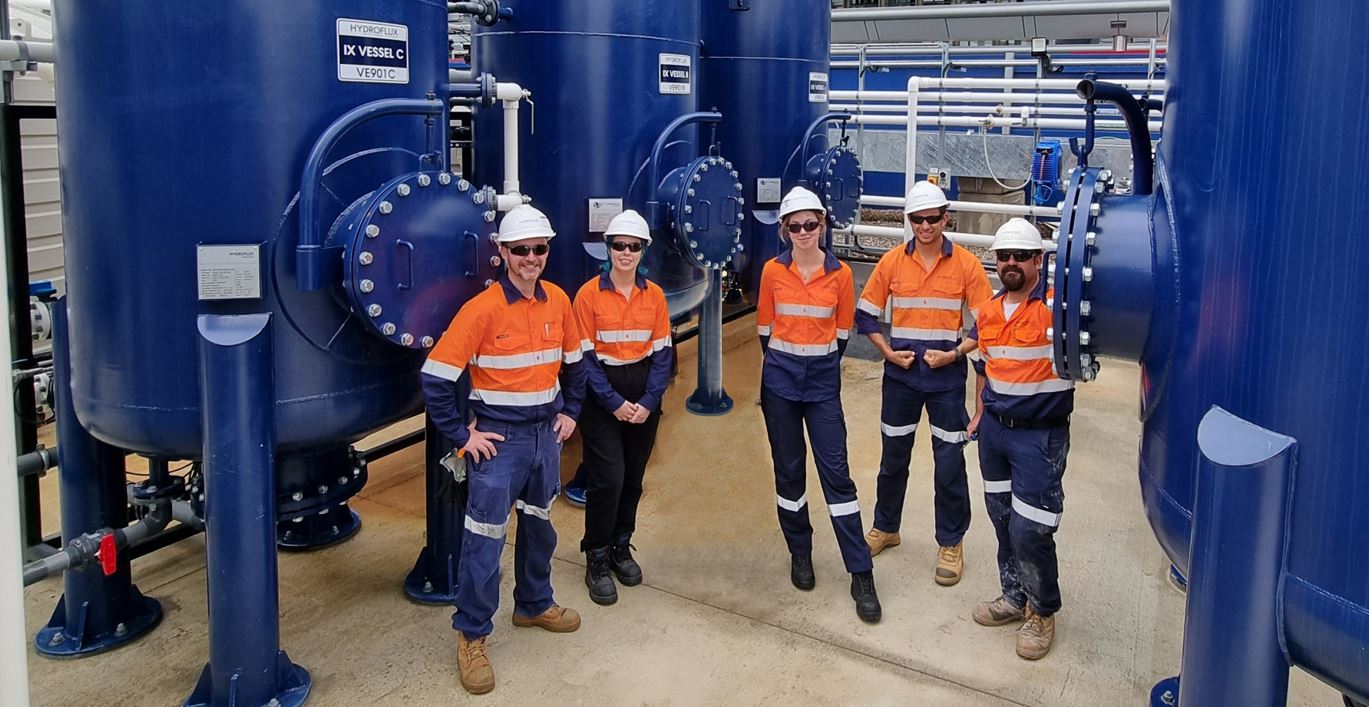

Sustainable Solutions
As Australia’s first certified carbon-neutral water and wastewater chemical supply and service business, we focus on sustainability. Developing and delivering sustainable solutions for treatment plant operation and maintenance is at the core of what we do. Our equipment is the most sustainable in the ANZ-Pacific market and is also carbon-neutral. Click here to find out what this means for you.
